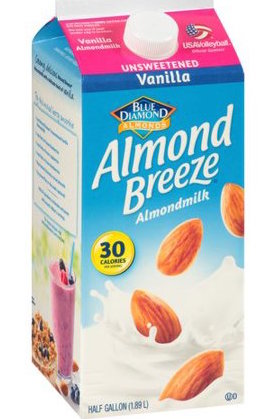For the past few years in Italian supermarkets, we have all sorts of "healthy" and "organic" alternatives to dairy milk for vegans and for consumers who are lactose intolerant. For example; soy milk (latte di soia), rice milk (latte di riso), hazelnut, coconut, or almond milk (latte di mandorla), and oat milk (latte di avena).
I know this trend of plant-based milks sold commercially is hardly recent in the US or in the UK, but in Italian supermarkets, these substitutes for cow milk, are not called latte (milk) in Italian and neither when the package is written in English, and I wonder why. I am specifically speaking about the product sold in supermarkets.


“latte di coccco” (coconut milk) and “latte di mandorla” are both described as bevanda (drink). And when the packet is written in English, the term “milk” is avoided, an organic rice milk is called bio drink rice natural. Note also the wording on the packet Granarolo (a leading Italian dairy company), it simply says RISO, the term bevanda is not even used.
 click the image above to see the larger version
click the image above to see the larger version
Compare with the situation in the US, where the product carries the term “almond milk”
and in Australia where the term “oat milk” is clearly displayed.
In the US there appears to be some debate over the definition of “milk”
Scott Gottlieb, the commissioner of the Food and Drug Administration, […] speaking at a policy summit in Washington, D.C., suggested that no product that doesn’t come from a lactating animal should be allowed to call itself milk. “An almond doesn’t lactate, I must confess”…
The War on Soy Milk, The New Republic
- Is it technically correct to call a beverage “milk” if it is obtained by mixing the strained pulp of almonds, hazelnuts, oats, etc. with water?
In the Middle Ages, almond milk was known in both the Islamic world and Christendom. As a nut (the "fruit of a plant"), it is suitable for consumption during Lent. (Wikipedia)
- Why was it called “milk” and not “almond drink” or “almond juice”?


